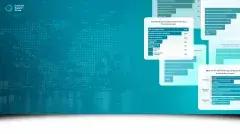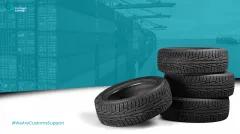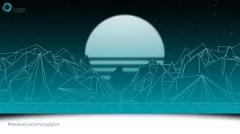From the recent evolution of CHIEF to the Customs Declaration Service (in the UK), through to the digital connection of end-to-end clearances, the progression of IT systems has revolutionised the process.
But as investment continues to increase in infrastructure and customs technology, where does the Internet of Things fit in?
What is the Internet of Things?
The Internet of Things (IoT) describes the way that systems integrate with each other to process data across them all, without the need for human intervention. Some examples of this include:
- Your thermostat tells your boiler that it’s cold enough for the heating to go on.
- Inventory systems make purchase orders to ensure availability.
- Your car diagnosing an issue with a part and ordering a replacement to the nearest garage.
As you can see, the IoT can perform basic, one-step automation, or it can generate a result from many calculations. The key to this is how data is collected and shared amongst the individual components in the network, and how they are programmed to work if a trigger value is recorded.
How does this work in customs?
Local customs
Due to the increased throughput of declarations, the IoT has been used in port infrastructure for years. Otherwise, constant manual supervision would be required for the system to run effectively.
You probably know that import consignments use many different servers when passing through a seaport. For example, a container through the Port of Felixstowe (POF) will be processed through Destin8, CDS, the customs broker’s software, the port system, the shipping line’s system, and potentially more.
For this movement, the IoT works to update all the software as the consignment progresses:
- The container is nominated for clearance by the agent (Destin8).
- The consignment clears customs (CDS & customs software).
- The consignment is released by the shipping line (shipping line’s system).
- The container lands off the vessel are moved around the dock, or outgated (POF’s system).
Without the IoT, humans would need to report these updates to several parties, who would also need to have more manpower to update the systems as the data is reported. This would raise the risk of data omission and error.
International customs
In addition to port communities, the IoT also works to keep international statistics and operations moving. Statistics on trade are gathered by HMRC using trader declarations, and this is shared with other government departments and publications with ease.
Operationally, the IoT is essential for end-to-end customs clearance. The data is entered once by a declarant, and the IoT prepares the clearance for the import customs agent in another country. Multiple systems and processes need to coordinate to encrypt, decode, and organise the data so that it can be understood and repurposed for the importing country’s customs system(s).
How the Internet of Things could affect customs in the future
Customs authorities are increasingly relying on data to make decisions more quickly. From the Ecosystem of Trust that is being piloted in the UK to the coloured trader routes in The Netherlands, authorities are looking to mitigate risk based on automatic profiling.
Not having AEO or working with a digital-first broker will not automatically make your company a target for auditing, but it may increase your risk of being left behind as leading companies reap the benefits.
Customs Support provides digital customs services across the UK and Europe. If you’d like to prepare for digitalisation and the Internet of Things in customs, contact us for the UK- and Europe-wide consultation today.














